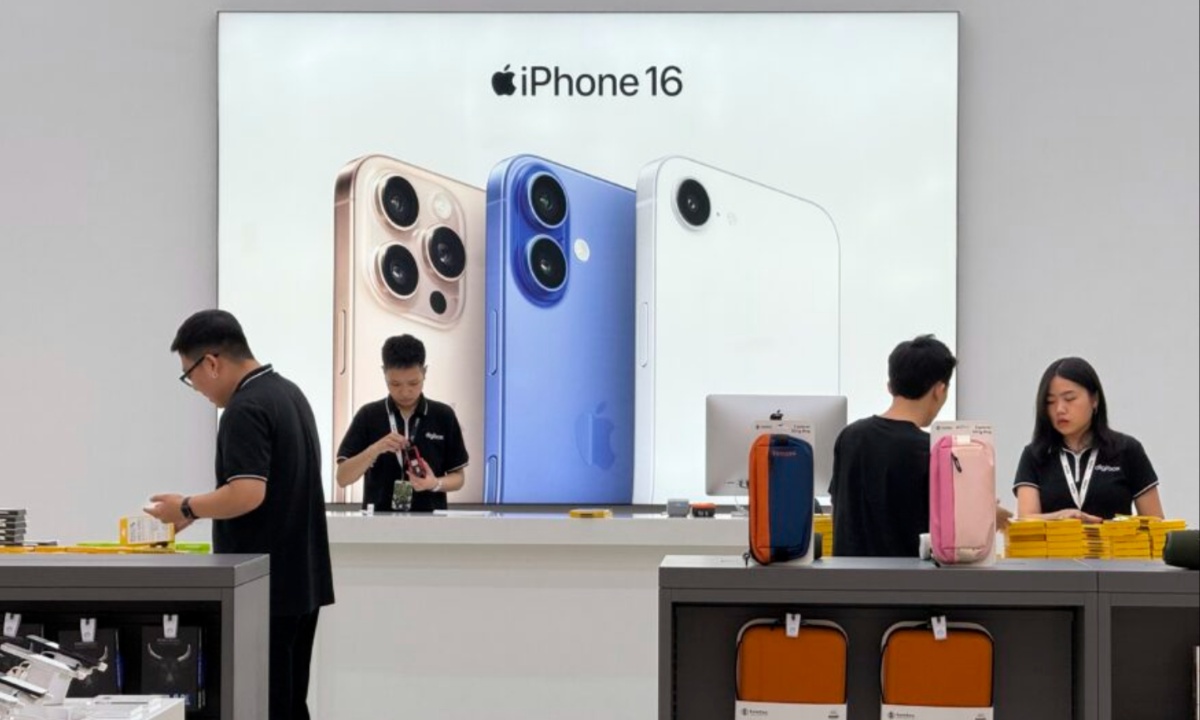In 2011, President Barack Obama questioned Apple CEO Steve Jobs about the possibility of bringing iPhone production back to the United States. Over a decade later, President Donald Trump has revived that demand, directing his attention to Apple’s current CEO, Tim Cook.
Trump has threatened a 25% tariff on Apple and other smartphone makers unless they manufacture phones sold in the U.S. domestically. This push aligns with Trump’s broader agenda of reviving American manufacturing and reducing reliance on foreign production.
Tim Cook recently revealed that most iPhones sold in the U.S. are expected to be shipped from India, highlighting Apple’s ongoing strategy to diversify its manufacturing beyond China. However, shifting production back to the U.S. is complicated.
Experts explain that countries like China and India have developed specialized workforces and infrastructure uniquely suited to producing millions of iPhones efficiently. Moving manufacturing stateside could disrupt this ecosystem and lead to higher costs or altered product designs.
China’s Specialized Manufacturing Network Challenges U.S. Expansion Despite Apple’s Investment Plans
China’s manufacturing ecosystem, including Apple’s partner Foxconn, benefits from a vast network of plants and specialized workers who operate with a high degree of precision and flexibility. Replicating this environment in the U.S. poses difficulties, given the specialized skills required for each component and the scale of production.
Additionally, the U.S. manufacturing workforce has shrunk significantly over the decades, and modern manufacturing now demands advanced technical skills such as coding and data analytics, which may not be widely available in sufficient numbers.

While Apple has pledged $500 billion over four years to expand its U.S. footprint, focusing on research, development, and initiatives like a Detroit academy for smart manufacturing, these efforts do not directly translate to building iPhones domestically at scale.
The academy aims to assist small and medium businesses, not to develop the extensive infrastructure or workforce needed for large-scale iPhone production. Tim Cook has acknowledged the rarity of the skill set found in China that supports Apple’s manufacturing precision.
Industry Experts Discuss Automation and Challenges in Shifting iPhone Production to U.S.
Some industry leaders believe Apple could gradually shift some iPhone production to the U.S. within five years by increasing automation and adjusting the product design to suit automated assembly. Experiences from other tech companies that have moved production to the U.S. show that automation and multi-skilled workers can help offset high labor costs.
However, Apple’s deep reliance on Chinese suppliers for components complicates even partial shifts, as does the potential price increase—analysts warn U.S.-made iPhones could cost up to three times more.
Apple faces a complex dilemma between political pressure and economic realities. While tariffs and government expectations push for U.S.-based production, the economic and operational challenges make a full transition unlikely in the near term. Analysts emphasize that Apple must carefully navigate this tightrope, balancing government demands with the need to maintain efficient, cost-effective manufacturing, while also managing the potential impact on product pricing and design.
